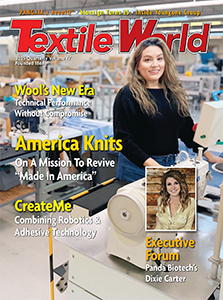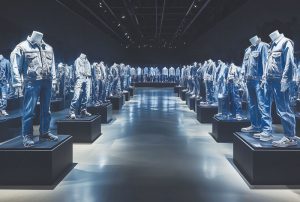
From curated archives to hands-on training, The Denim Institute & Museum will celebrate denim’s heritage, teach the next generation of makers and champion sustainable innovation.
By Rachael S. Davis, Executive Editor
Denim has long been more than fabric — it’s a cultural touchstone woven into fashion, music, workwear and identity.
Now denim’s story will have a permanent home in Los Angeles with the launch of The Denim Institute & Museum in 2026, a project dedicated to honoring denim’s past, educating the next generation of makers and shaping a more sustainable future.
Co-founders Jonny Saven and Loren Cronk are the duo behind the museum, which was created to preserve denim’s cultural and industrial heritage and will cover more than 150 years of denim history.
Cooperation From Industry Talent, Mills & Brands
Lead Advisor Saven and Operations Lead Cronk have gathered a team of denim industry talent — with experience at brands including Levi Strauss, Ralph Lauren, L’AGENCE, Marc Jacobs, Anthropologie, Benetton, Diesel, Giorgio Armani, DKNY, Calvin Klein, Evisu, Edwin, Gap, Target, Wrangler, Lee — to help them establish this new museum.
The founders also envision collaboration with mills and brands to advance sustainable initiative including low-impact dyeing, ethical manufacturing and fiber-to-fiber recycling.
“The Denim Institute & Museum is the first institution of its kind dedicated to preserving denim’s history,” Cronk said.
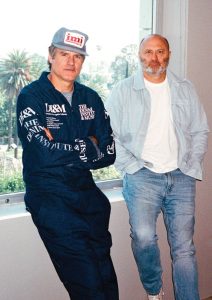
Three Key Pillars
The museum focuses on three key components — preservation, education and innovation.
Honoring denim’s legacy, educating and empowering the next generation of designers and innovating are important cornerstones of the museum.
For The Love Of Denim: Idea Behind The Museum
Cronk is a self-taught clothing designer and when he landed a job at Levi Strauss and was introduced to denim, he fell in love with the fabric. “Designing the style is only part of the process, the life the garment takes on after it’s made is another” Cronk said. “As you work with denim, you know each time it is worn, it alters the look of the fabric. Over time, it takes on new life. It might be the same style of jeans, but each person wears them and cares for them differently. They’re constantly evolving, and that’s what fascinates me about denim.”
From his introduction to denim at Levi Strauss, Cronk has had a deep and involved journey in the denim industry. He learned to take jeans apart to understand how they were constructed, and watched the sewers in some small San Francisco-based factories to better understand how they managed parts of the construction process he considered the most challenging. He had jobs designing for Ralph Lauren, Rocawear and Marc Ecko, among other brands.
In 2010, opened a namesake denim boutique, “Loren” in Brooklyn, N.Y. The denim atelier made custom jeans for customers on site, and also launched a ready-to-wear brand, BLKSMTH, that used White Oak selvedge denim and manufactured jeans in Los Angeles. The boutique’s open sewing space allowed customers to see the designers working, cutting, sewing, making and repairing jeans.
“From time-to-time, we’d get asked if we offered courses — how to hem, how to repair, how to taper a leg and how to make jeans,” Cronk shared. “We didn’t offer courses, but it’s where the idea first started. The seed was planted, and I knew that in the future I wanted to be part of educating and sharing what I had learned.”
From within his small Brooklyn boutique, Cronk hatched the idea for The Denim Institute and Museum over a cutting table surrounding by denim fabric and jeans.
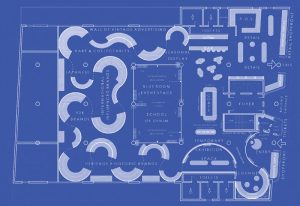
Cronk’s next career move took him to Los Angeles where he opened a second Loren boutique. Unfortunately, the store didn’t survive the COVID pandemic, but it was in Los Angeles that Cronk connected with his friend Saven and pitched his idea for the museum.
Saven, currently the CEO of L’AGENCE, was on board, and over the past four years, the co-collaborators have refined the idea into an actuality — a denim hub with a short-course denim school and learning center focused on a sustainable future.
“We realized if we’re going to teach denim, we can’t do so without sharing its history,” Cronk said. “Denim has an untold story, a story that crosses boundaries of social, cultural, financial and many real and artificial limits,” offered Saven. “It’s a universal way of representing fashion, media, pop culture, entertainment and more. It has end-less and ongoing dialogue, one that will be told forever and as it continues to evolve.”
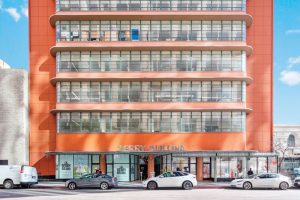
Selecting A Location
As a city, Los Angeles has a long history with fashion and has proved popular with denim brands in particular. “Although denim is global and universal, it’s the right place to be,” said Saven. “The old brands along with the newer brands and the manufacturing history is rooted in this city.”
According to Cronk and Saven, there was an explosion of Y2K denim brands — including Seven for all Mankind, Citizens of Humanity and True Religion among them — that established Los Angeles as a premium jeans city. “We want the museum to be widely accessible, and Los Angeles, known for tourism and laid-back denim fashion style, offers the ideal backdrop to inspire and connect with a global audience,” Cronk said. “Los Angeles is also a cultural hub,” Saven offered. “Music and entertainment share a strong connection to the denim movement and illustrates why this city is idea for the intersection of denim culture and pop culture.”
The Gerry Building, in the heart of downtown Los Angeles’ Fashion District, was selected to house the museum. This landmark location built in 1947 is listed on the National Register of Historic Places and also as Los Angeles Historic-Cultural Monument No. 708. It’s also conveniently placed between the California Market Center and The New Mart — the epicenter of the apparel industry in Los Angeles.
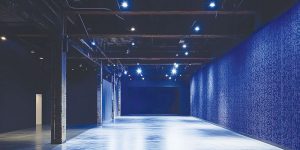
Curating The Exhibits
Denim’s rich legacy will be honored through curated exhibitions, rare archives as well as storytelling, which highlights people, brands and movements behind this iconic fabric.
Over the years, the Saven and Cronk have amassed a significant collection of denim that continues to expand. To further enhance the museum’s collection, the museum will partner directly with brands interested in collaborating. “Additionally, we’re working with private collectors to secure rare and historically significant pieces as part of our broader curatorial strategy,” Cronk shared.
With the exhibits, the museum hopes to tell a story that spans the past, the present and the future. This starts with local and regional production and expands to reflect on denim’s evolution on a global scale.
The museum also will house The Blue Room — a public event space that may be used for expert-led seminars, denim flea markets, collaboration launches and brand takeovers, among other ideas. “Visitors can also enjoy denim art shows, photography exhibits, sample sales, custom chainstitch art shows, and rare and collectible denim auctions, creating a unique space where industry leaders have the opportunity to connect directly with consumers,” Cronk added.
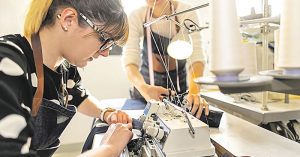
Training Program
In addition to the curated exhibits, the museum will house a “School of Denim” for immersive and hands on training. Skills including pattern making, sewing and business essentials will be offered to help grow the denim industry’s workforce. The short-courses will provide hands-on training to empower the next generation of denim professionals.
With his self-taught skills, Cronk is especially excited about the training aspect of the museum. “A few brands have already reached out about using our space to train their sewers, which has been incredibly encouraging and confirms that we’re heading in the right direction,” he said.
The school is open to everyone, and the website with more details will soon be live. Cronk and Saven also are in discussions with potential education partners. “We’re speaking with FIT in New York City about sending students to our program for immersive week-long courses,” Cronk shared. “We’re also exploring an exchange program with the Jean School in Amsterdam to facilitate cross-cultural learning. Additionally, we’re in conversation with the Hong Kong Fashion Institute, and we have a European ambassador actively building relationships with fashion schools abroad.”
Cultural Hub, Education Center
As the first of its kind institution dedicated to preserving denim, The Denim Institute & Museum also hopes to play a role in shaping denim’s future. Exhibitions, talks, showcases, and research and development will connect legacy craftsmanship with next-generation innovation. Museum founders also hope to support and drive forward a circular, sustainable future for denim “Through brand activations, showrooms and event programming, we will provide a year-round platform for mills, fiber companies, designers and factories to connect directly with one another and with the public,” Cronk said.
“I’m a designer-maker at heart,” he continued. “I love taking an idea and bringing it to life. My passion lies in creating — not only denim, but spaces that inspire and where I can share not only my own experience and knowledge, but also the collective expertise of our entire team.”
As the museum readies to open its doors in 2026, its founders envision more than just exhibitions. They see a living, breathing space where denim’s heritage meets innovation, where makers and brands connect with students and consumers, and where a timeless fabric continues to evolve. The Denim Institute & Museum promises not only to preserve denim’s history, but to inspire its next chapter.
2025 Quarterly Issue III

